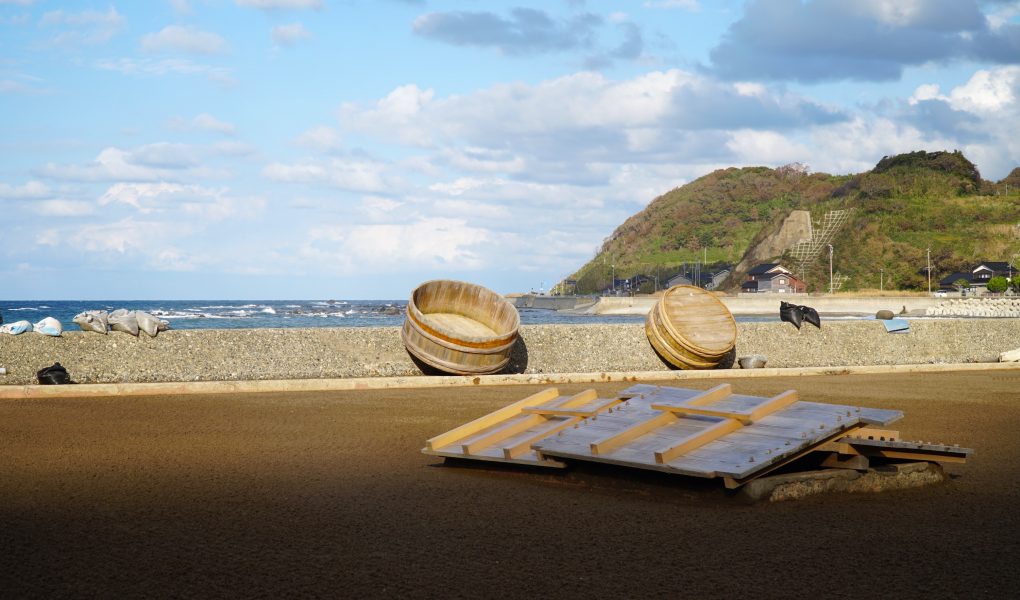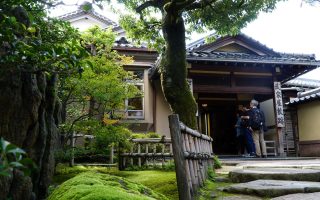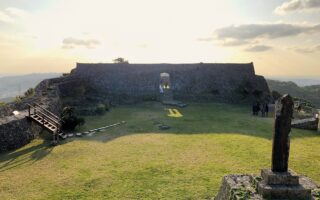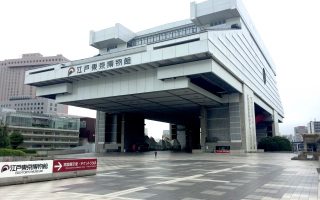Okunoto, meaning “inner part of Noto”, is home to a unique tradition of salt production. In this area of Japan, the locals have been producing salt from sea water for centuries. The methods, by which the salt is extracted from the water, have changed over the years. In the Okunoto Sea Salt Village, however, the oldest methods have been kept alive. The traditional Agehama salt production taking place in Okunoto, is the only of it’s kind in the country.
Noto Hotels Noto Private Guided Tour
Suzu Salt Farm Village
A few salt farms can be found along the coast, when driving around the Okunoto area. The main tourist draw, however, is the Suzu Enden Mura (lit. Suzu Salt Farm Village), a michi-no-eki (road side station), with a good salt museum and a souvenir shop. The museum does a good job explaining the process of salt production, and how the process has evolved over the centuries. A traditional Agehama style salt production is kept alive at this museum to save the cultural heritage, and educate visitors. A small entrance fee is charged for the museum. There are other salt farms, within few minutes of driving, and it’s highly recommend to visit one of these farms while you are in the area.
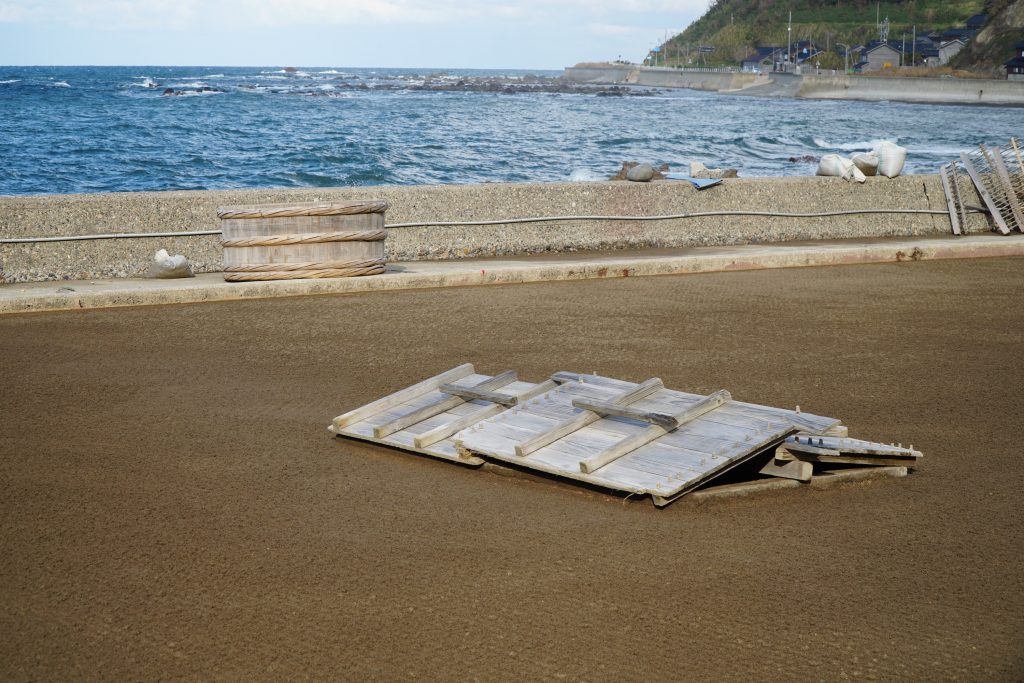
The Agehama method
Agehamashiki is a method of extracting salt from sea water. This method was commonly used in the 13th century, but evolved to more efficient methods over time. At Suzu Salt Farm Village salt is still extracted this way, to save the cultural heritage that this process is.
Water is carried from the sea in wooden buckets, and sprinkled over a sand covered clay field. As the water evaporates, salt crystals are left sticking to the sand. The sand, now containing salt crystals, is collected and placed in a wooden box. The sand in the box is over poured with more salt water, which dissolves the salt crystals. The sand is then separated from the, now highly concentrated, sea water by means of a straw filter. The last step is the extraction of the salt from the water, by boiling.
An enhanced version of this process, where the ebb and flow naturally overflows the sand field has been used from around the 17th century. This improved method, however, is not usable in Suzu since the tide doesn’t come in far enough.
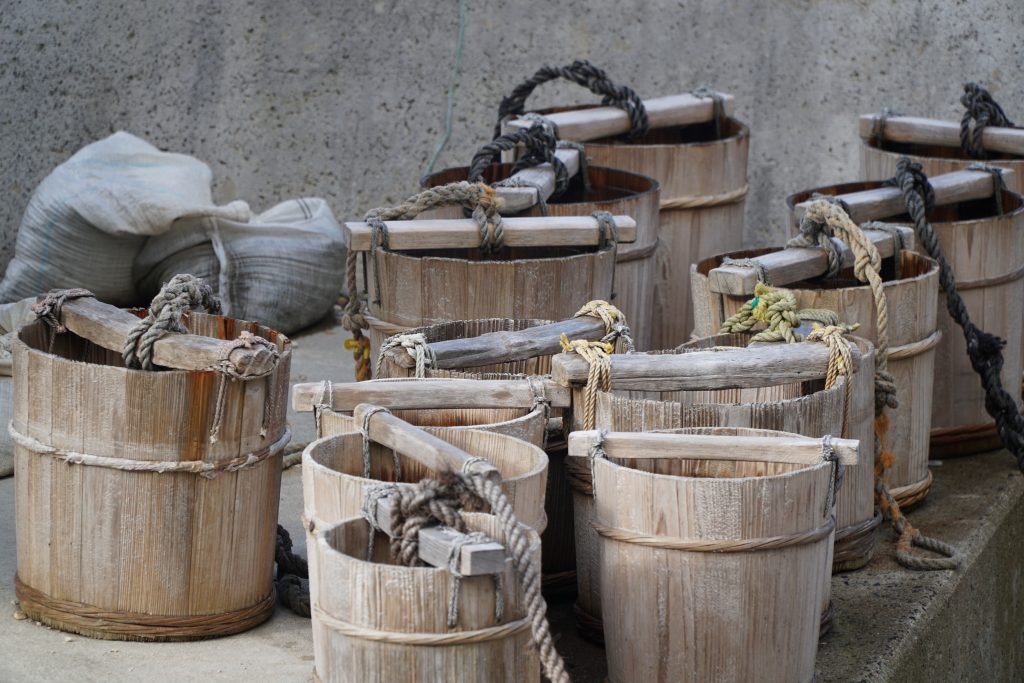
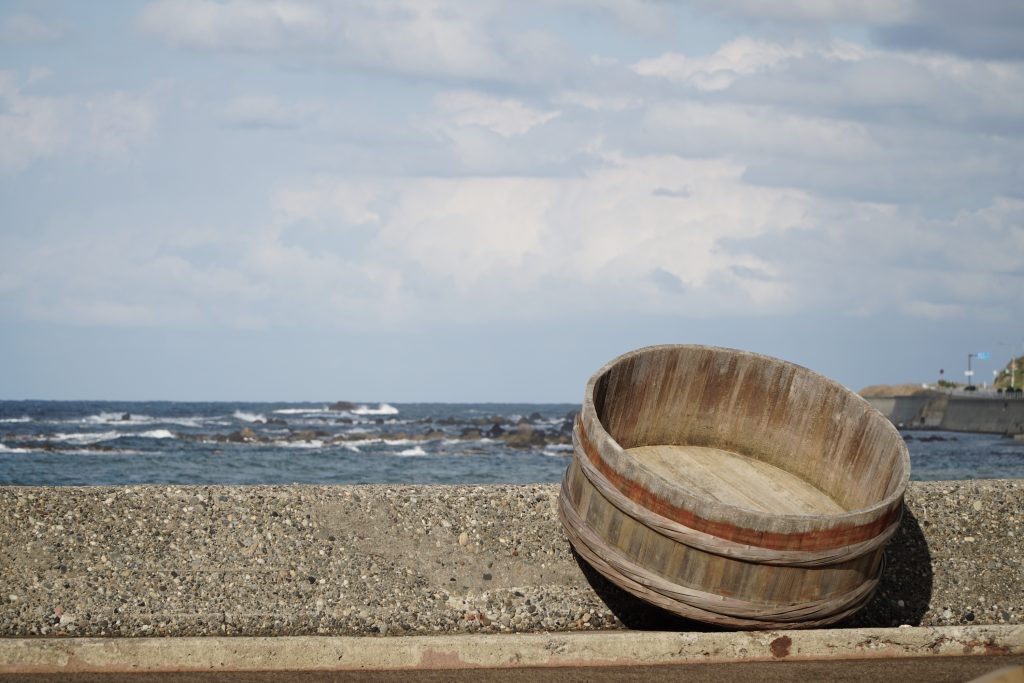
Getting there
Private tour: A convenient option is to book an all private tour of the Noto peninsula! This way of traveling provides a lot of freedom, great guidance and no need to drive yourself.
By car: Suzu Salt Farm Village is located a 30 minute drive from Wajima. The facility is located right on route 249, making it easily accessible. Free parking is available at the michi-no-eki. Parking coordinates: 37.486361, 137.113225.
By bus: The nearest bus stop is “Suzushiotamura Bus Stop”. To get there from Wajima, take the bus to Sosogiguchi Bus Stop, and from there another bus to “Suzushiotamura Bus Stop”.
- Not sure how to take a bus in Japan? Read my post “how to take a bus in Japan“
Planning a trip to the Noto region? Then check out all the other articles about the Noto Peninsula.

